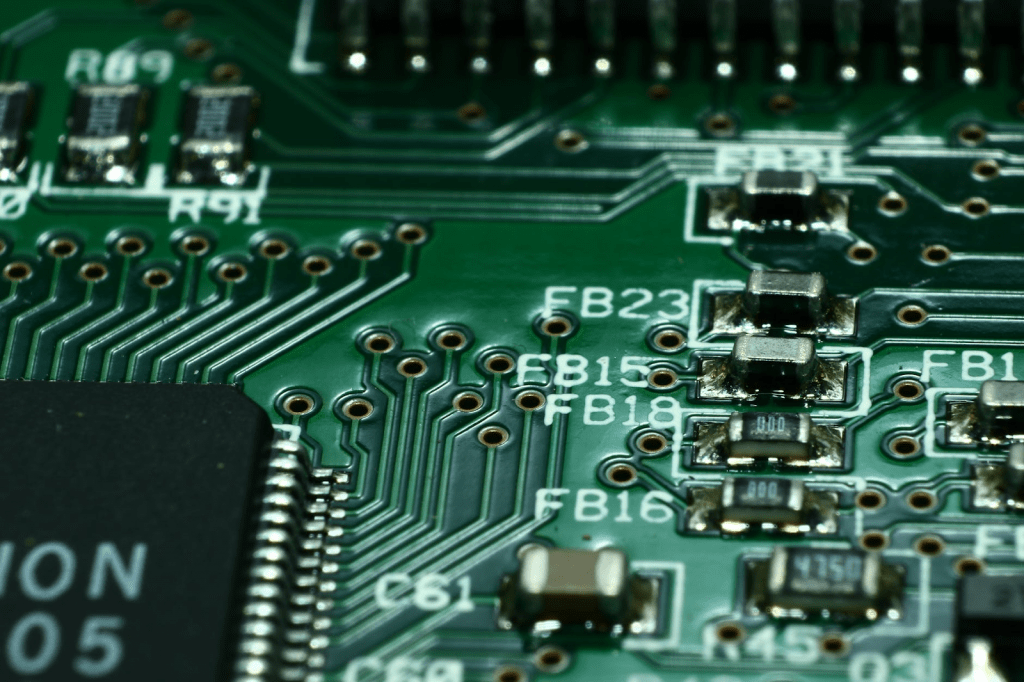Electronic circuitry is the essence of modern life. From mobile phones to industrial plants, all kinds of electrical equipment rely on printed circuits to control them. Without these PCB circuit boards, it would be very difficult for electronics to function effectively. That is why it is so important for companies to find a PCB manufacturer they can work with without issue.

Type of PCB
This is an important factor when choosing a PCB manufacturer because some manufacturers can offer more than one type of service or PCB type, but each has its own advantages and disadvantages. The most common types are single-sided, double-sided, and multilayer boards. Single-Sided Boards only have traces on one side so they are fairly cheap because…You guessed it – there’s less material! Double-Sided boards have traces on both sides so the amount of copper needed is doubled therefore increasing costs slightly. Multilayer boards usually consist of up to 16 different layers so more complex components can be placed on the same board, also increasing costs. Newer PCBs can also come in rigid, rigid-flex, and flexible PCB compositions. Flexible PCBs are particularly in demand because of their wide range of applications in electronics and machines. Asking for Flexible PCB Quotes, or quotes for the type of PCB you need becomes more convenient once you know your options. Make sure to ask about IPC classifications while you are at it, because if a supplier is using material that isn’t approved for your application, then they aren’t really trying to give you a good deal
Quantity of orders
Being able to manufacture a very large quantity is another way some PCB manufacturers are able to save costs and therefore offer you lower prices. However, if you only need something small or have a very tight deadline, it might not be necessary to go with that provider because they might not be able to meet your demands.
Sometimes, you might not be sure about what kind of circuit board you need, and that’s okay! Manufacturers usually offer a service to review your file and see if it can be manufactured, which is free. You will also find cheaper prices for a prototype order than a single unit because the price per square inch decreases as quantity rises. Make it a point to look for manufacturers that have no minimum orders so you won’t have to go through the hassle of going in batches!
Desired specifications
The quality, thickness, and material type of the board determines the overall cost so try to choose one which falls within your budget – obviously if you need something for an important application or one with heavy usage it would make sense to invest in higher quality boards, but otherwise don’t waste money!
Realize that there is a tradeoff between cost and quality
When you go to a lower-tier manufacturer for cost reasons alone, you must realize that the workmanship and testing procedures will not be as good as those done at higher-end manufacturers. Be sure to ask about what tests will be performed on your boards if any. Also, keep in mind that by going with a low-cost manufacturer, the price must also include communication because that is usually automated or nonexistent from low-level suppliers. Getting low bids from bidders without communication skills is a lot like buying a car but not being able to kick the tires or open the hood.
Quality is hard to measure
There are many different supplier quality scales out there, most of which were created by end-users. If you feel your own expertise qualifies you to invent a measurement of supplier quality, ask around about what other people think before publishing it! Look for examples of suppliers with a good reputation in your industry. Most PCB buyers have visited Chinese PCB suppliers at some point, so if someone swears they have found “the best PCB supplier EVER!!!” ask them who that is and then do due diligence on that company before making any hasty decisions. After all, choosing a reputable manufacturer is important because poor quality can lead to expensive mistakes down line. If you can’t find any information on a PCB supplier, it’s usually better not to use them.
Use the total price of ownership
The best way to compare prices is using the total price of ownership (abbreviated TPC). This number takes into account many factors that go into making a good PCB supplier choice. When you look at this metric, more expensive isn’t always better! You must also keep in mind that certain features may be important for your particular application. Sometimes the cheapest option with all the bells and whistles will actually be cheaper than more expensive options with fewer feature sets.
Price is always an issue when thinking about PCB boards. If possible companies should consider developing their own circuit board designs, which can reduce production costs by as much as 20%. However, this is best done in the early stages of production and only if they have a team of engineers who can dedicate their time designing custom boards.
Look for customer references
Customer references are one of the most valuable tools available when looking for good suppliers. Ask your potential suppliers for lots of names and contact information of their customers or your potential PCB manufacturers if you are looking for someone specific.
High turn-around times can be a blessing and a curse
Generally, it’s easier to build good relationships with suppliers who have higher turnaround times because these suppliers are usually more responsive when there is an issue that needs to be resolved. However, high lead times can sometimes cause problems if the project requirements change often -When things go wrong with a supplier that has higher pricing, they will end up costing more in the long run. So if you notice that your low-cost candidate has extremely short lead time on their quote, make sure they are actually planning to put resources toward your job! Otherwise, it’s not worth setting yourself up for failure by relying on “price hunters”.
Check the manufacturing experience
When placing an order for PCB boards, it’s vital to work with a manufacturer that has experience designing products specifically for clients. This means finding someone who is willing to go beyond just meeting their needs and developing designs that are more feature-rich, effective, and functional than what they had envisioned. The more involved a PCB manufacturer is in the creative process the better results everyone will see at the end of the day.
Check for support availability
The most important thing companies should consider when choosing a PCB manufacturer is whether or not they can offer support. All manufacturers make mistakes at some point, and when this happens they need to fix the problem before it spreads. If a company isn’t willing to go the extra mile when their clients are experiencing difficulty it can be difficult for them to maintain a long-term business relationship.

All these tips should help when choosing a manufacturer, but remember that they all offer different services, and such prices are based on estimations so there might be some variation over time. Also, keep in mind that every company has its own Terms and Conditions so read them carefully before placing an order. It all boils down to your particular needs and which one comes out as the best after some consideration.
